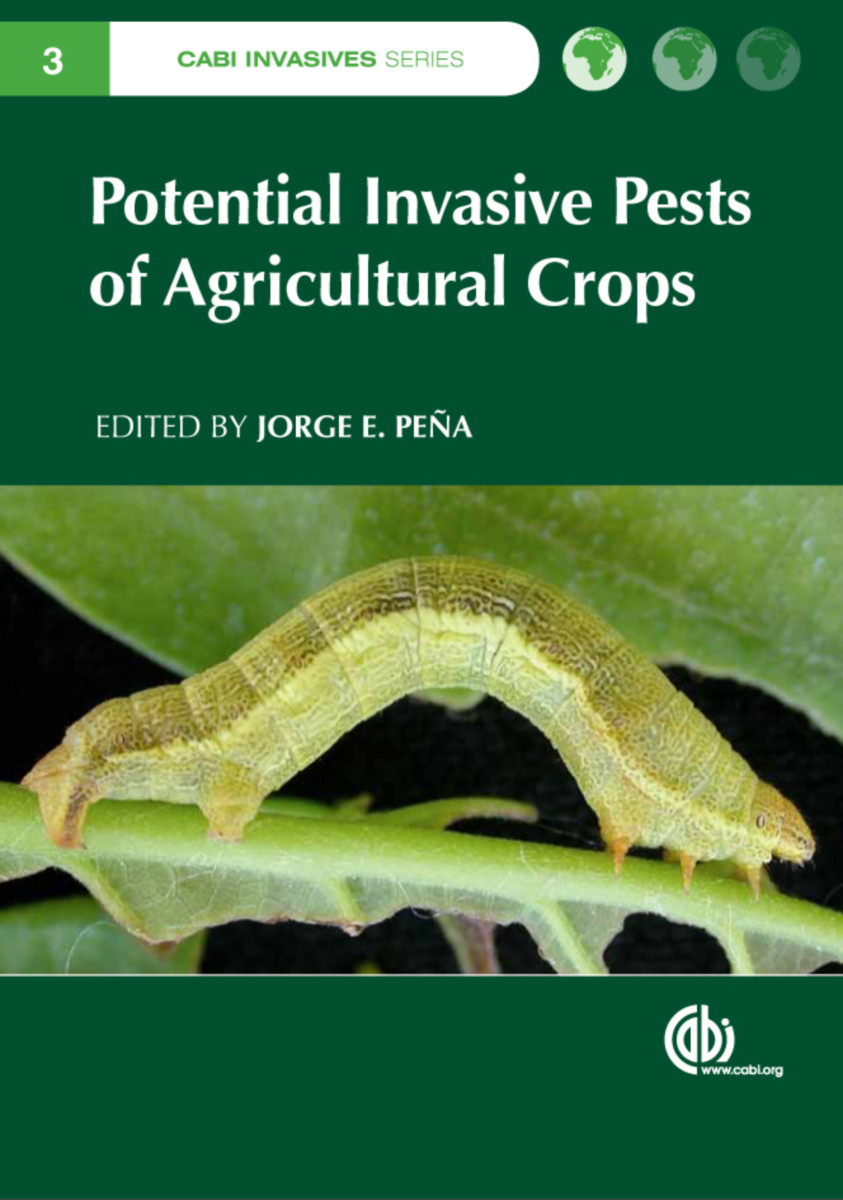- Publisher
CABI - Published
1st August 2013 - ISBN 9781845938291
- Language English
- Pages 496 pp.
- Size 6.875" x 9.75"
- Images 141 illus
Invasive arthropods cause significant damage in agricultural crops and natural environments across the globe. Potentially threatened regions need to be prepared to prevent new pests from becoming established. Therefore, information on pest identity, host range, geographical distribution, biology, tools for detection and identification are all essential to researchers and regulatory personnel. This book focuses on the most recent invasive pests of agricultural crops in temperate subtropical and tropical areas and on potential invaders, discussing their spread, biology and control.
1. Biology and management of the red palm weevil, Rhynchophorus ferrugineus
2. Avocado weevils of the genus Heilipus
3. Exotic bark and ambrosia Beetles in the USA: potential and current invaders
4. Diabrotica speciosa: an important soil pest in South America
5. Potential Lepidopteran pests associated with avocado fruit in parts of the home range of Persea americana
6. Biology, ecology and management of the South American tomato pinworm, Tuta absoluta
7. Tecia solanivora Povolny (Lepidoptera: Gelechiidae), an invasive pest of potatoes Solanum tuberosum L. in the Northern Andes
8. The fruit borer, Neoleucinodes elegantalis (Guenée) (Lepidoptera: Crambidae), an insect pest of Neotropical solanaceus fruits
9. Copitarsia spp. : Biology and risk posed by potentially invasive Lepidoptera from South and Central America
10. Host range of the nettle caterpillar Darna pallivitta (Moore) (Lepidoptera: Limacodidae) in Hawai?
11. Fruit flies, Anastrepha ludens (Loew), A. obliqua (Macquart) and A. grandis (Macquart) (Diptera: Tephritidae): three pestiferous tropical fruit flies that could potentially expand their range to temperate areas
12. Bactrocera species that pose a threat to Florida: Bactrocera carambolae and B. invadens
13. Signature chemicals for detection of citrus infestation by fruit fly larvae (Diptera: Tephritidae)
14. Gall midges (Cecidomyiidae) attacking horticultural crops in the Caribbean Region and South America
15. Recent mite invasions in South America
16. Planococcus minor (Hemiptera: Pseudococcidae): bioecology, survey, and mitigation strategies
17. The citrus orthezia, Praelongorthezia praelonga (Douglas) (Hemiptera: Ortheziidae), a potential invasive species
18. Potential invasive species of scale insects for the USA and Caribbean Basin
19. Recent adventive scale insects (Hemiptera: Coccoidea) and whiteflies (Hemiptera: Aleyrodidae) in Florida and the Caribbean Region
20. Biology, ecology and control of the ficus whitefly, Singhiella simplex (Hemiptera: Aleyrodidae)
21. Invasion of exotic arthropods in South America's biodiversity hotspots and agro-production systems
22. Likelihood of dispersal of the armoured scale, Aonidiella orientalis (Hemiptera: Diaspididae), to avocado trees from infested fruit discarded on the ground and observations on spread by
handlers
23. Insect life cycle modeling (ILCYM) software - a new tool for regional and global insect pest risk assessments under current and future climate change scenarios


